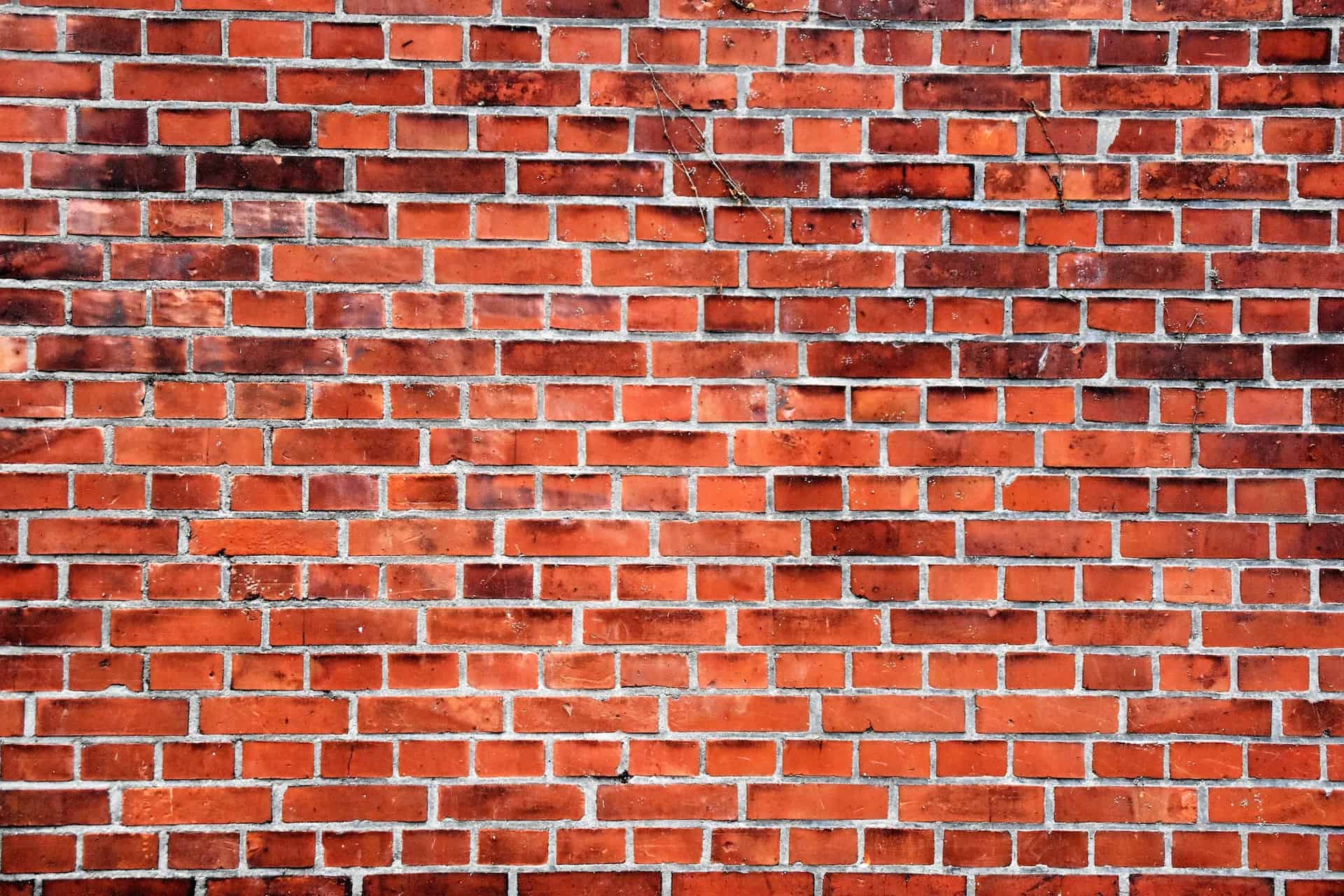The use of cement mortar to repoint older properties is one of the most common issues we see when conducting building surveys. Whilst repointing a property may seem like a routine or minor repair, using the wrong materials can cause damp issues and damage to brickwork and stonework, meaning some hefty repair bills in future.
As Chartered Building Surveyors, we’ve inspected thousands of buildings, and we’re passing our knowledge on to you to ensure you can look after your property. In this blog, we’ll explain the difference between lime mortar and cement mortar for repointing, why they’re used and when you should use them to ensure you can keep your traditional property in the best condition possible.
Can you use cement for pointing? Although cement mortar is commonly used for repointing properties, this is non-permeable and won’t allow moisture to pass through it. This will cause damage to the masonry. When you own an older building you should look to use a lime mortar to allow moisture to pass through, protecting the bricks or stone and avoiding damp issues in the future.
Read on to learn more about the use of lime mortar compared to cement for repointing traditional buildings.
What is Cement Pointing & Why is it Used?
The term refers to the finishing of stone & brick mortar joints, and it is usually done because the mortar holding the brick together typically doesn’t last as long as the brick itself. Due to this, it should be replaced periodically.
Cement pointing, particularly strap pointing, became popular in the 60s and 70s, with Ordinary Portland Cement (OPC) as the material of choice for the majority of contractors, regardless of a building’s age.
This is primarily because it’s what they’re taught to use as apprentices and trainees, but also because it’s;
- More readily available,
- Less expensive,
- Hard wearing,
- Easier to work with,
- And less reliant on certain weather conditions to correctly install.
All fantastic characteristics on the face of it, why wouldn’t you use cement based mortars to repoint your masonry walls? We explain why you shouldn’t below.
What is the Problem With Cement For Pointing?
Although you can use cement for pointing older buildings, you shouldn’t. Some of the common issues we see almost daily are linked to the use of cement mortar to repoint the brick or stone walls of traditional buildings.
This seemingly routine minor repair is often a direct or indirect cause of damp issues, among other defects. Ultimately, this results in damage to the building fabric and sometimes hefty repair bills for property owners.
Cement mortar is non-permeable, meaning it won’t allow moisture to pass through it. Traditional masonry walls are designed to allow moisture to pass through them via the sacrificial point, the lime mortar between the courses of stone or brickwork, and ultimately to evaporate at the wall’s surface.
The use of cement prevents this natural osmosis and evaporation from occurring at the same rate and inevitably results in a build-up of moisture within the masonry over a period of time.
Water will always egress from the weakest point, which once the lime is replaced, becomes the masonry. Over time this will begin to undermine the surface of the brick or stonework, and during the winter months, when the moisture within the masonry will freeze, the frozen moisture will expand and cause visible spalling to the masonry.
Building materials weren’t standardised as they are today, so the extent and rate of damage will vary depending on the strength of the cement mortar, level of moisture exposure, environmental factors and strength of the masonry.
But ultimately some degree of damage will occur given a sufficient period of time.
What Damage Can Cement Pointing Do?
Moisture can have negative effects on the internal fabric of the building. Given the right conditions and appropriate length of time, excess moisture will penetrate the plasterwork and decoration, manifesting as flaking paint, hollow plaster, discolouration, blistering plaster and mould.
In certain locations, excess moisture within the masonry will also affect adjoining timbers, typically floor and ceiling joists. Over a period of time, this can result in the development of wet rot, beetle infestation and occasionally dry rot in extreme cases.
We’ve recently written a blog discussing the effects of damp on a house, which you may find helpful if you’re experiencing damp issues within your home.
Should You Remove Cement Pointing?
This depends. If your home is currently pointed with cement, the ideal solution would be to remove the cement and get it repointed properly with lime mortar. However, this is not always the best solution as removal could cause damage to your property. Get in touch with our chartered surveyors for more tailored advice for your home.
What is the Best Mortar For Repointing Old Brick?
Ensuring the correct materials are specified is crucial, as is their application and preparation of the masonry. When you own an older building you should look to use a lime mortar. Lime mortar is more porous when compared to cement, which allows moisture to pass through, protecting the bricks or stone and avoiding damp issues in the future.
How To Repoint With Lime Mortar
Before you repoint, the existing mortar needs raking out to a depth that is twice the width of the mortar joint to ensure the new mortar is adequately bedded within the masonry to ensure longevity.
Prior to application the surface and mortar joint should be adequately wet to varying degrees depending on the temperature at the time of application.
The mix itself should use a suitable grade of NHL lime mortar in the correct ratio of aggregate, water and additive sympathetic to the type of masonry. A mortar that’s too strong will have a similar effect to that of cement, too weak and it will prematurely fail and wear away.
Additives such as wood ash can be included to alter the colour of the pointing and the grade of aggregate should be carefully considered to reflect the finish required and width of the mortar joint.
When dealing with Listed buildings, and those within conservation areas, liaison with the conservation officer and samples of the mortar will be required to ensure the right mix is applied.
The atmospheric temperature should be taken into account before, during and after application of the mortar. Depending on the season and likely weather conditions, additional measures to control the curing time will be necessary to ensure the mortar optimises its adherence and strength without developing fractures.
Understanding Your Home Better With Fourth Wall
Preventing dampness and other issues in your home can be a confusing process, but we’re here to help. We’re a team of qualified RICS surveyors who can offer reliable advice and outline the most important next steps to take.
To understand your building further, whether it’s your home, business or investment property, get in touch with our expert team of building surveyors today. Reach us via phone, email, or by completing our contact form.
Related Questions
What Happens if You Don’t Repoint Brickwork?
If you don’t repoint your brickwork at all, your bricks will eventually deteriorate, and you may experience:
- Loose bricks
- Large cracks in the existing mortar
- Dampness
- Gaps in the brickwork
How Long Does it Take To Repoint a House?
Repointing your house takes anywhere from 10-20 days, depending on several factors including the number of walls, the overall size of your house, and whether your house is semi detached, or you have a fully detached home. Smaller repointing jobs, for example, part of a wall, typically take less than one day to complete.
How Long Does Lime Repointing Last?
No matter the type of mortar that you use to repoint your house, it won’t last forever. Lime mortar typically lasts up to 100 years, so it is a worthwhile investment. You will only need to repoint your home with lime mortar once you see signs of cracking, erosion, or other general deterioration in your brickwork.
How Can You Find Out When Your Property Was Built?
The knowledge and experience of a building surveyor can identify the age of your property and help assess the materials used and alterations made. Land registry and historic map searches can help identify when your property first appeared, but won’t necessarily show any extensions or alterations.
How Can I Check if my Contractor is Qualified To Work With Lime Mortar?
When looking to undertake alterations to your property, ask the contractor what materials they intend to use and also ask to see relevant examples of their work to ensure they understand the type of property you own.
How Can You Tell if Pointing is Causing Damp Issues?
If you have damp issues in your home, or are concerned about the materials used, get in touch for independent advice from our surveyors. We’ll help you identify the cause of any issues, and provide thorough remedial advice to ensure you keep your property in the best condition.
To learn how we write and review our content for accuracy, take a look at our Editorial Policy.




